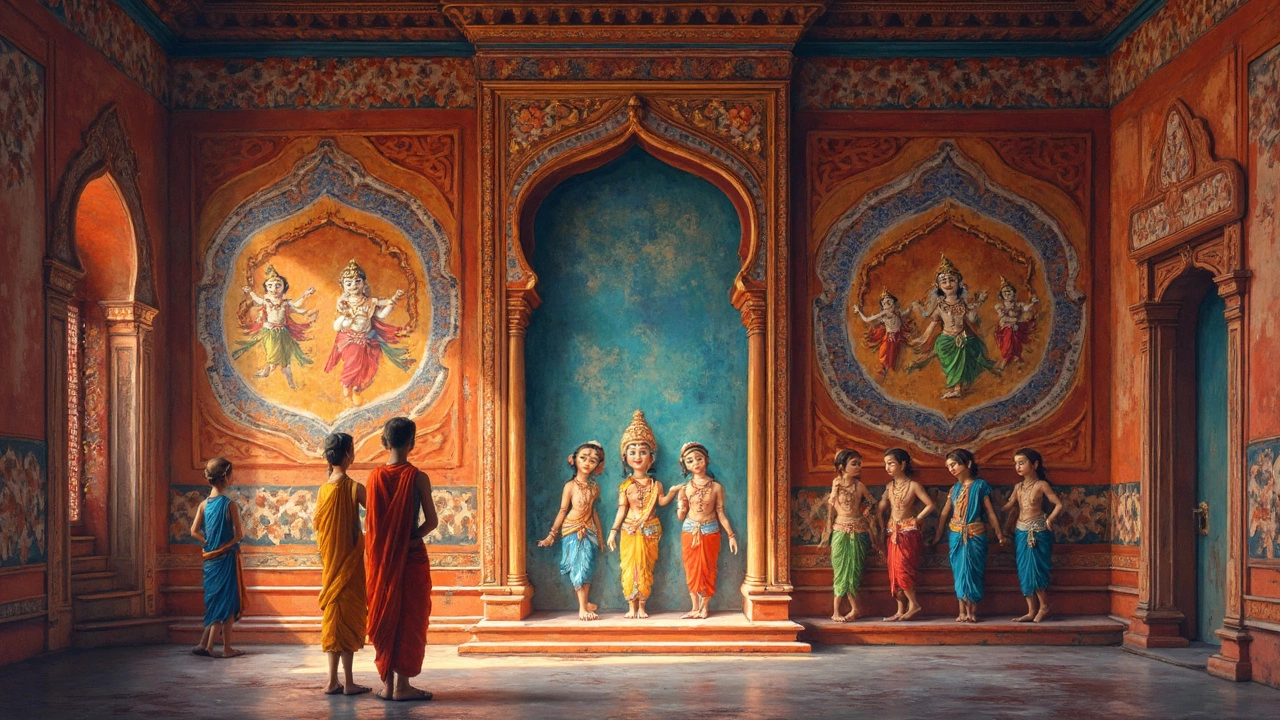Ancient Indian Art: A Quick Guide to Timeless Treasures
Ever wondered why ancient Indian art feels so alive even after thousands of years? It’s because the people who made it mixed faith, daily life, and pure craftsmanship into every stone, paint, and metal piece. This guide cuts the jargon and shows you the main styles, famous examples, and easy ways to see them yourself.
Key Forms of Ancient Indian Art
First up, sculpture. From the towering Buddhas of Sanchi to the intricate carvings at Mahabalipuram, stone was the go‑to material. Artists chiseled stories of gods, kings, and everyday folks right into rocks, turning temples into open‑air galleries. Next, painting. While many ancient murals have faded, the wall art of Ajanta and Ellora caves still shines with bold colors and detailed scenes from the Jataka tales. These works used natural pigments and tell stories that still teach moral lessons today.
Don’t forget metalwork. The famous iron pillar of Delhi, standing tall for over a millennium without rust, showcases the advanced metallurgy of the time. Brass and copper plates often featured delicate repoussé work—embossed designs that looked like they were lifted off the surface. Finally, textiles and jewelry. Ancient silk fragments and gold ornaments reveal sophisticated weaving patterns and metal‑smithing skills that rival modern designers.
How to Explore Ancient Art Today
If you want to see these wonders up close, start with a virtual tour. Most major sites—Ajanta, Sanchi, Khajuraho—offer free 360° videos that let you walk through galleries without leaving home. For a real‑world experience, plan a visit to one or two nearby locations. The National Museum in Delhi houses a solid collection of stone sculptures and metal artifacts, and the Archaeological Survey of India runs guided walks at most heritage sites.
When you’re on site, bring a notebook. Jot down a quick sketch or a line that catches your eye. It helps you remember details like the way a deity’s hand is positioned or the pattern of a border motif. Also, ask local guides about the legends behind each piece—those stories give the art its full flavor.
Finally, support preservation. Many ancient sites rely on visitor donations for restoration. Even a small contribution helps protect these treasures for future generations. And if you love the art, try recreating a simple motif in a craft project at home. It’s a fun way to connect with history and keep the techniques alive.
Ancient Indian art isn’t just museum fodder; it’s a living dialogue between the past and today. By understanding the main forms, spotting key examples, and taking a few practical steps, you’ll see why these creations still inspire millions. So grab a coffee, fire up a virtual tour, or book that train ticket—your adventure into ancient Indian art starts now.

